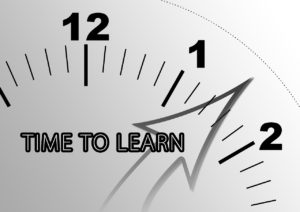Alcohol addiction is deadly, we know this. It does not just punish the addict, it punishes their family and society. For those who find sobriety alone or with help from a detox program, staying sober is a lifelong challenge. Relapse occurs when one resumes drinking and is a detrimental problem that deserves more attention. Understanding some basics of alcohol addiction and how to help prevent relapse can be a bit complicated. The next section on “choice” will summarize an article on the neurobiology of addiction by Xavier Noel.(i) It simplifies some popular thoughts about how and why addiction works in the brain. Then, we can see how to target effective ketamine treatments to help prevent relapse.
Is alcoholism a choice?
The impulse/habit system:
How does the compulsion to drink develop? A part of our brain, called the amygdala-striatum neural complex, motivates us to achieve rewards. This area is driven by dopamine, a naturally produced neurotransmitter in our bodies that has many effects, including feelings of pleasure, or reward. Alcohol, and other addictive drugs, increase overall dopamine levels in our brain. Therefore, a link forms between automatic, repetitive behaviors, such as pouring a drink, and increased dopamine. These actions are saved in our brain as rewarding. And the brain loves rewards.
Increasing dopamine activity also accelerates the change between the first steps of choosing to have a drink and later craving a drink. New pathways in the brain form with repetitive behavior. Cues and memories in the environment to drink are noticed more quickly, like hearing glasses clink, or walking in the front door after work. These cues drive the compulsion to drink. The brain’s automatic response is to seek this reward, but can’t we control this behavior?
The control/decision making system:
The decision-making part of our brain is found in the prefrontal cortex. It is also known as the “reflective system”, or executive function system, where we can control impulses. This means we can trade short term rewards, like a drink, for possibly greater long-term goals, such as avoiding a DUI charge. One explanation is that there is a balance between a “cool” and “hot” system that works out how we respond to triggers or cravings. The “cool” refers to basic working memory and inhibition of impulses. The “hot” involves numerous emotional responses that are possible. Damage to either of these systems may impair the ability to say “no” to situations, or drugs like alcohol, that can harm us. Either the impulse side or the emotional side wins when we lose a health balance.
When/How impulse overpowers control:
Poor decision making in alcoholics may also be explained by yet another system called the insular cortex. It responds to imbalance in our bodies from things like sleep deprivation, anxiety and stress. These stressors may hijack our impulse/habit system and increase cravings while promoting decisions to seek out alcohol. Repeated cycles of increased cravings can also essentially rewire brain circuits, reinforcing continued destructive behavior.
Addiction as a “Pathology of Choice”
Other studies support that “faulty brain connections related to decision-making can lead to addictive behaviors and relapse.”(ii) There is a definite shift from blaming addiction on cravings alone to finding abnormalities on decision making areas of the brain. Thus, the brain is not able to make the right decisions to ignore the craving.
NMDA receptors are at fault too?

Ketamine treatments
Family history of alcoholism is a risk factor for developing alcohol addiction. A study by Petrakis et al showed one answer may lie in the NMDA (N-Methyl-D-Aspartate) receptor, which is vital to the glutamate system in the brain. Alcohol alters this receptor’s function, but if the receptor is not normal, that person may be more susceptible to alcohol abuse.(iii)
How can ketamine help?
Ketamine treatments can play a key role in preventing relapse in those who have either completed a detoxification program or managed to stop themselves.
Over-write memories that drive addiction
It is possible a rewarding memory of taking a drink, for example, can be triggered repeatedly by seeing a glass of beer, going to a restaurant, or maybe returning home from work. These triggers lead to the urge to drink. Ravi Das from University College London explains why people often quit but return to drinking. “The main problem is the really high relapse rate after treatment,” said Das. “People can successfully quit using over the short term while they’re being monitored in the hospital … but when they return home they’re exposed to those environmental triggers again.”(iv) The good news, is that each time the brain accesses that rewarding memory, the neural connections that code the memory are destabilized. It is at this moment that ketamine, which blocks the brain receptor required for the formation of memories (NDMA), can help weaken or even erase the memory. In other words, ketamine will help break the power of that trigger.
The psychedelic experience
The benefits from the psychedelic experience while receiving a ketamine treatment may hold benefits. Dr. Tobias Stevens, in his presentation on ketamine as a treatment for alcohol use disorder, postulates the hallucinations and altered mental state from ketamine may help change lifestyle choices. He suggests the experience may alter perceptions and break routine behaviors.(v) Therefore, a combination of psychotherapy with ketamine, (ketamine psychotherapy or KPT) may prove helpful for some folks. KPT allows the psychedelic effects from ketamine to enhance a psychotherapy session and is shown to be effective helping those with addiction, including heroin and alcohol by Dr. Evgeny Krupitsky.(vi)
Ketamine allows learning

Ketamine Clinics
Psychotherapy is a vital mainstay of alcoholism recovery treatment, but why are relapse rates so high? Maybe, postulates McAndrew et al, the alcoholic brain simply can’t learn the new skills.(vii) There is a proven decrease in neural growth factors in the brain, BDNF, with alcohol addiction. With fewer connections between nerves, and less ability to make new connections, the brain cannot learn new skills. With ketamine treatments and synaptogenesis, which happens to peak 24 hrs after a treatment, well timed psychotherapy can have a greater impact.
What does ketamine for relapse prevention look like?
Ketamine is not a solitary treatment for alcohol relapse prevention. To say so would oversimplify the disease. Current studies include interesting combinations with ketamine treatments.
KARE – Ketamine for reduction of Alcoholic Relapse
KARE is a multi-site project running in England that is a clinical trial seeking to explore psychotherapy combined with low dose ketamine treatments as a possible treatment for alcoholism.(viii) Participants who completed alcohol detoxification receive IV ketamine 3 times interspersed with 7 therapy sessions. The psychotherapy model, developed by Dr.s Rob Hill and Jen Harris included 3 key areas:
• Risk reduction strategies: Identify high risk situations, cope with cravings, or restructure unhelpful thinking
• Wellness promotion: planning weeks, problem solving, relaxation, and mindfulness
• Education: what is addiction, biological effects of alcohol both acute and chronic, alcohol and sleep, and how alcohol interacts with the brain
Combining ketamine with other medications?
Combining ketamine treatments with other prescription drugs is debatable as there is conflicting evidence. For example, naltrexone is frequently used with alcohol dependence. It binds opioid receptors and is supposed to take away cravings for opioids and alcohol which can take away reward effects.(ix) In reality, it does reduce overall total alcohol consumption, but not necessarily abstinence. Nimodipine is a calcium channel blocker that is also studied for its’ ability to decrease alcohol-type effects from ketamine treatments.(x) Additionally, some providers prescribe Baclofen to help suppress cravings.
But, isn’t ketamine addicting?
Are we just trading alcohol addiction for ketamine addiction? This is not true according to several studies. A study by Krystal, et al in 1998 clearly showed ketamine did not increase cravings on recovering alcohol dependent patients. (xi) Recently detoxified alcoholics given ketamine did not go on to abuse the drug. Keep in mind, ketamine treatments for alcohol abuse is given by trained providers in a medical setting at doses far less than what one may find on the street. The body does not become physically dependent on ketamine, meaning there are no physical withdrawal symptoms when one stops. However, there is always a possibility of mental dependence on a treatment that is helping. But, lets put this in perspective. Many people are dependent, or “addicted”, to a variety of activities, like exercise, weight loss, meditation, because these things reward them, (ie their brain).
Conclusion

Ketamine infusion success
Reducing alcohol dependence and relapse has far reaching benefits from decreased personal injury from liver disease, to depression and anxiety, to family relationships, to work stability, or to alcohol related death from accidents. Once detoxification is complete, ketamine can help people maintain sobriety when used in part with a comprehensive program. Alcoholics Anonymous (AA), psychotherapy, adjuvant medications and physician oversight can all help cut cravings and save lives.
Photo Credits:
Headline: by Gerd Altmann from Pixabay
Baby: by Michal Jarmoluk from Pixabay
Clock: by Michal Jarmoluk from Pixabay
Sign: by Gerd Altmann from Pixabay
References:
